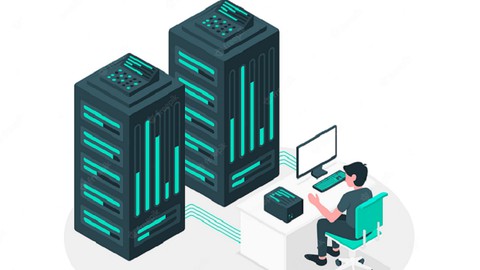Description
Introduction
- Overview of ECS Service
- Components involved in forming ECS Cluster
- Image registry – Amazon ECR
- Management – Amazon ECS & Amazon EKS
- Hosting – AWS Fargate & Amazon EC2
- Create your first ECS Cluster
- Define Container, task, Service & Cluster
- Lab Session – Run Nginx Application using ECS Cluster
- Lab Session – Service in ECS Cluster
- Lab Session – Run Docker Application on VM Infrastructure
- Lab Session – Build a Docker Image using DockerFile
- Create your own VPC – Pre-requisite of Amazon ECS
AWS Fargate
- Overview of ECS Cluster – AWS Fargate, EC2 Linux/Windows
- Run a task – Fargate Launch Type
- Create a service – Fargate Launch type
- Task definitions
- Create a Docker Image of the Nginx Web App
- Push Docker Image to AWS ECR Repository
- Add Container in Task Definitions
- Run the task of the Nginx App in a Fargate Cluster
- Create Service of Nginx App in Fargate Cluster
- Update Service in Fargate Cluster
AWS ECS Cluster – EC2 Linux + Networking
- Overview of AWS ECS Cluster – EC2 Linux
- Create your own VPC for ECS Cluster
- Lab – Create EC2 launch type ECS Cluster
- Detailed view of the resources on your cluster
- Lab – Access Private Subnet Instances
- Lab – Access Private Subnet Instances
- Create a task for the Nginx Webserver
- Overview of Bridge Network Mode
- Define task size & add container
- Add task in a cluster
- Check container status from instances
- Access Nginx web server running on Private Subnets
- Run multiple containers in the ECS cluster
Dynamic Port Mapping
- Overview of Dynamic Port Mapping
- Lab – Configure dynamic port mapping
- Lab – Add dynamic ports to Security Group
Application Load Balancer in ECS Cluster
- Overview of ALB in ECS Cluster
- Configure ALB
- Define Target Group & Listener in ALB
- Create a task for ECS Cluster
- Create a service
- Detailed view of the resources on your cluster
- Test your ALB
- Distribution of traffic equally to all containers by ALB
- Last Lecture

